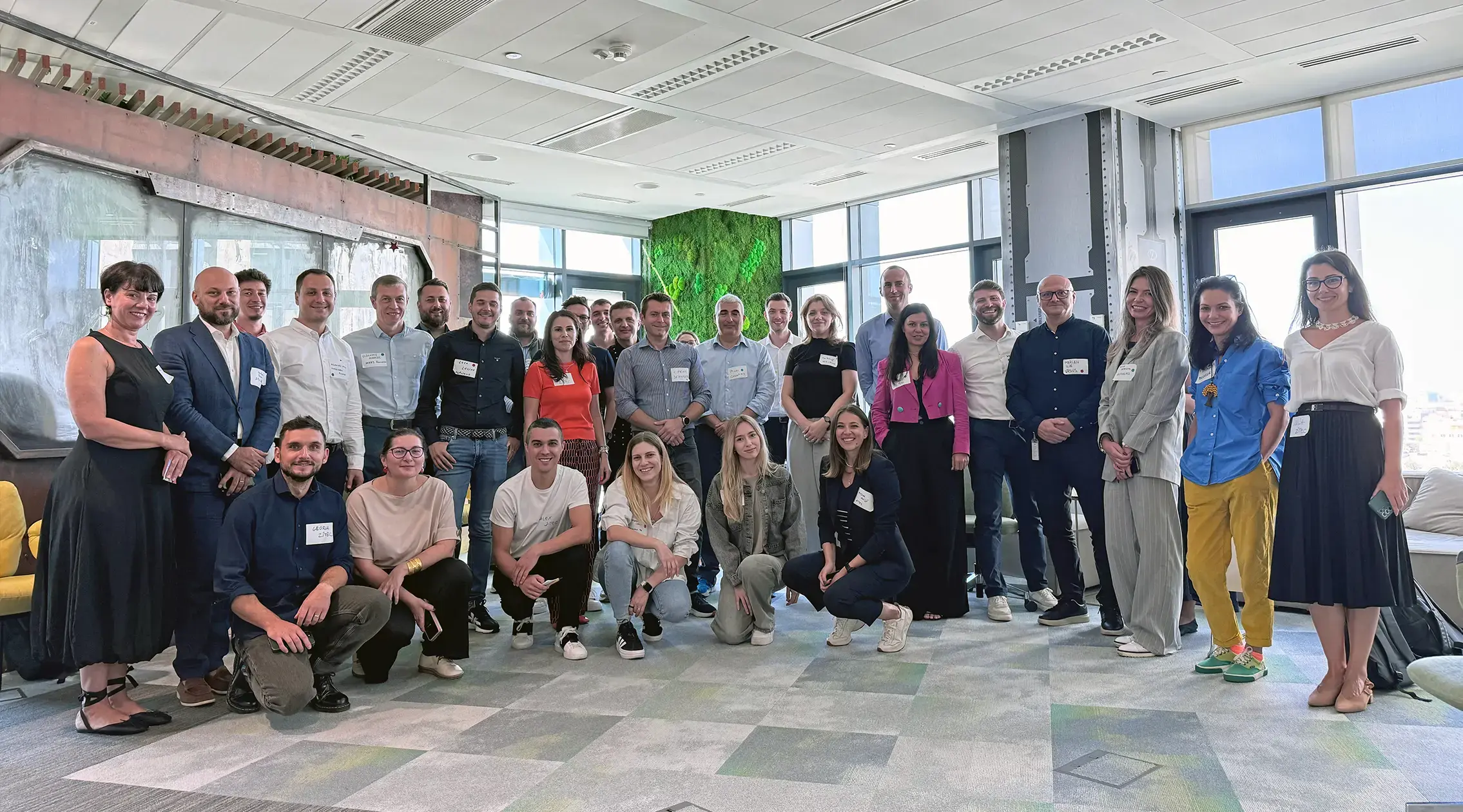AI is a trend, a buzzword, and a marvel in cutting-edge technologies–but what’s the reality behind the hype?
Google and Zitec got together to discuss the latest AI trends and translate them into real-life solutions that retailers can apply to transform their businesses.
Q1: Can you please describe Google and Zitec’s experience working with retailers?
Elisabeta Moraru, Country Director Google Romania, Moldova, Bulgaria, Hungary:
Google Cloud’s client portfolio includes many of the world’s leading retailers and a vibrant network of innovative local and regional players.
In fact, retail is a top priority vertical for Google Cloud, and we are one of those rare providers that has a bespoke solution for retailers, with all the complexities and challenges that retailers actually need. Examples include our industry-leading Recommendations AI, Search for Retail API, Product Discovery tools, etc. This focus has led to numerous customer success stories.
Lucian Daia, Chief Technology Officer, Zitec:
Zitec has over 20 years of building bespoke digital platforms, mobile apps, and eCommerce solutions for the retail and distribution industry, delivering across 30 countries in the EU. We have catered to various B2C, B2B, and B2B2C platforms to help retailers capture new market segments and revenue in today’s digital economy.
Leading companies from sectors such as:
- FMCG – eMag
- ElectroIT – Flanco
- Fashion – iELM or FashionDays
- Quick Service Restaurants – KFC
- Home improvement – Leroy Merlin and Brico Dépôt
Don’t only entrust us with their full software product development cycle, but expect us to be digital business partners who can help them transform and scale their e-business, delivering seamless shopping experiences, operational efficiencies, and competitive ROI. In 2023, our digital retail solutions and services registered a robust over 45% YoY growth.
Q2: What are key success factors, from your experience, that have contributed to the digital transformation of retailers?
Elisabeta Moraru:
Retailers are on a difficult mission every day. Consumer behaviors have changed tremendously as digital adoption increasingly becomes the norm. For instance, personalized offers that are delivered in real-time, delivery options right to the doorstep at the consumer’s convenience, and expert advice or recommendations to help with buying decisions.
They expect a lot more as they get smart about what technology can offer, and these expectations are pushing the boundaries of retail models and practices.
Digital transformation for retail is no longer a mere checkbox, a choice or a standard. It’s a high-bar pursuit in many different ways, influenced by business needs, such as
- Creating personalized experiences that is driven by data to meet each customer’s expectations
- Finding new areas of revenue growth
- Driving perpetual experimentation or innovation to anticipate not only evolving behaviors, but new ones from different markets
- Revolutionizing the customer experience, fueled by new technology possibilities such as artificial intelligence (AI).
Lucian Daia:
Our most successful retail customers share three common factors when it comes to digital transformation.
- The first factor has a lot to do with understanding online consumer behavior. With digitally-savvy consumers or users, UX and CX play a pivotal role in digital transformation. We help them trace and investigate shopping and buying journeys that will inform the design applied to the user interface of the digital platforms, aligning with the consumers’ accustomed methods of product discovery and purchase. A big part of this revolves around searching and finding the products they want and the duration it takes to meet their satisfaction right through to check-out and delivery.
- The second factor is the 360° shift in mindset about selling through digital channels. Online or e-commerce is an entirely different business model. It requires employee roles, inventory management, and operational processes, or customer support that are different from physical channels. It's akin to launching a new business line, completely separate from brick-and-mortar stores. Successful retailers do not set up their digital businesses like they would a physical outlet. Understanding the fundamental differences is imperative.
- This leads us to the third factor – successful retailers understand the purpose of their digital product and its return on investment (ROI). Thinking about technology through the lens of business realities is key. Instead of real estate architecture, implementation, and placement, our customers bring us in to advise and help bridge the possibilities of software architecture and digital processes with the intricacies of their business landscape, operational maturity, and market dynamics. Together, our problem-solving discussions go beyond technical mastery to explore and discover the human relationships, behaviors, and interactions that will shape their digital product and innovation. Our more successful customers typically adopt a longer-term perspective when looking at the ROI for their digital product, even as we assist them in calculating the minimal investment required to go live and start generating returns.
- Finally, I’d say that successful retailers prioritize digital solutions that scale seamlessly to meet surges and high fluctuations in online activity, particularly during peak events, like Black Friday. Ensuring uninterrupted operations and high performance during high-traffic periods is paramount for maintaining customer satisfaction and maximizing revenue.
![]()
Q3: Considering the complexity of these initiatives, what are the 3 key elements retailers should prioritize when calculating the ROI for their digital innovation?
Elisabeta Moraru:
Innovation can come from transformative projects, but also from small feature enhancements that delight customers. While measuring ROI on innovation might be a challenging task (especially for long-term efforts), focusing on initiatives that create a clear competitive advantage with the help of AI solutions is a strategic way to start.
In a crowded market, retailers can stand out by delivering exceptional customer experiences across channels. Focus on key areas such as:
- (1) Loyalty programs that build relationships
- (2) Data-driven recommendations that enhance product discovery
- (3) Search functionality that makes finding products effortless
- (4) AI-powered conversational commerce that delivers personalized support can help retailers gain distinctive advantages.
Google Cloud offers particularly strong solutions to address these areas:
- (1) Customer Data Platform provides the foundation for personalized interactions, boosting loyalty, and increasing customer lifetime value (CLV)
- (2, 3) Vertex AI Search for Retail with Large Language Models enhancements allows fine-tuning on your unique product data. This leads to highly relevant search results, reducing search abandonment and increasing sales;
- (4) The Conversational Commerce solution can enable a real-time, multi-modal conversational shopping experience via AI-powered chatbots, which can increase customer satisfaction, streamline purchases, and potentially reduce support costs.
Lucian Daia:
Retailers must adopt a dual approach when calculating ROI for their digital innovation endeavors: revenue generation and cost reduction. For revenue-generating digital products, it's crucial to conceptualize them as an entirely new business line, with strategic business and market planning as well as execution to maximize profitability.
As for reducing costs, automating business processes as much as possible can significantly improve profit margins and lower operating expenses.
Central to both strategies is cloud technology, offering efficient, flexible, and scalable infrastructure. With cloud solutions, retailers can swiftly deploy new digital initiatives, such as hyper-personalized, seamless omnichannel experiences, ultimately increasing revenue streams. Additionally, cloud technology presents substantial opportunities for cost reduction by ensuring uninterrupted operations while optimizing resources – and enhancing overall resilience.
Businesses usually have a fixed investment and are looking to anticipate the specific revenues from it. It's essential to adopt a more strategic approach. Envision how the investment can scale over time by identifying what aspects of the business have a multiplier effect to expand and receive investments accordingly.
Q4: Retailers are increasingly looking at AI’s potential to gain a competitive edge. What are some specific strategies to effectively implement AI in retail operations?
Elisabeta Moraru:
AI technologies, especially given recent advancements, truly have the potential to transform the Retail Industry as we know it. The key is ensuring the chosen solution delivers the most significant impact for your specific need. Cloud hyperscalers, such as Google Cloud, accelerate this process, providing access to powerful computing resources and leading-edge AI models (see Gemini) at reduced costs. This frees retailers to focus on innovation and their core business priorities instead of managing infrastructure, AI development, and research.
At the same time, it is also important to understand that not all retail use cases require AI as a technology solution, either alone or as part of a hybrid solution. However, retailers cannot always be expected to know the difference between the hype and the reality.
That’s why we guide customers to collaborate with experienced partners like Zitec, who can help them identify essential use case requirements and investments, validate potential solutions through an agile Proof of Concept, analyze ROI, and then confidently move to production or address the next priority.
Lucian Daia:
Retailers must follow several pivotal steps to approach an AI-driven digital product effectively. Begin by identifying the use case scenario that is core to a specific business need. It might be low customer retention, cart abandonment, or low basket value. Whatever it is, the AI implementation will vary greatly.
There are two types of business scenarios for AI applications:
- The first is the scenario to improve customer experience through customer-facing features. AI can help personalize the shopping experience with features like product recommendations, natural language search for easy product discovery, engaging chatbots for customer support, or generating appealing product images.
- The second scenario has to do with optimizing operations behind the scenes. AI can help predict customer lifetime value, for instance, by informing customers about acquisition costs in relation to estimated revenue. It can analyze sales patterns to optimize inventory management, streamline supplier invoice management, or conduct real-time price comparisons across competitors.
So, once a critical business scenario is identified, the next step is to explore and define a Proof of Concept (POC) to validate the hypothesis and contain the test parameters. It's important to define and ensure some level of success before making significant upfront commitments or scaling the implementation broadly. This mitigates risks and provides valuable insights into the feasibility and potential of AI outcomes.
Given that various AI technologies and new data are emerging to serve different purposes, retailers cannot be expected to know what’s what, let alone have all the necessary data, skills, or talent to develop an in-house solution from scratch.
This is where tech partners like Google and Zitec, who work in a multitude of scenarios, technologies, and data sets, can save retailers a lot of time and money.
Take, for example, Google's pre-built product, RecommendationsAI. With access to extensive volumes of data from retail customers that continuously enrich the AI algorithms, it has been extensively tested across numerous retailers. This makes it an excellent option to build on because it offers fewer risks than building an AI product from scratch in-house.

Q5: What advice would you give to retailers who are hesitant to embrace AI due to concerns about technical complexity or privacy concerns?
Elisabeta Moraru:
Retailers should not look at AI as something that has to be all-or-nothing. A measured approach, focused on addressing specific use cases with clear goals and limited scope that can expand over time, will help retailers navigate these complexities. Having a trusted partner will also simplify the journey.
At Google, we see privacy as a continual effort. Google Cloud provides robust security, adhering to strict security standards and constantly adapting to evolving standards.
For the retail industry, we partner closely with retailers to deliver focused privacy controls and tools that can help them protect their customer's data and comply with data protection regulations. We advise incorporating data governance while piloting use cases to confidently check responsible data collection and usage practices supporting customer privacy and long-term AI success.
Lucian Daia:
Retailers can address technical complexities if they have the right strategy for implementing AI, by following the strategies I previously outlined.
When it comes to security or data privacy concerns, consumers today are well aware that tailored recommendations rely on their data inputs. This emphasizes the importance of informed user choice – those seeking highly personalized experiences engage with the system, while others retain the option to opt out, particularly under EU regulations. We are lucky that the GDPR anticipated this and guarantees data storage within the EU, forbidding any exchange with external data centers so that AI operates within defined parameters.
Due to this, AI providers in the EU are actively working to enhance confidence by offering better guarantees. Businesses and consumers definitely have to be extra careful if they are dealing with free and non-regulated products. However, with advanced solutions like Vertex AI from Google, data control rests firmly with the user.
It’s also worthwhile to point out that contrary to popular belief, companies can leverage a lot of publicly available data without compromising individual privacy. This means that personal or proprietary data remain anonymous while collective or frequent behavioral data patterns are favored to train AI algorithms that can deliver user benefits.
Q6: How does the collaboration with Zitec & Google help speed up AI-driven innovation to enhance consumer experience?
Elisabeta Moraru:
We partner with Zitec experts and leverage Google’s data and scale to offer tested AI models, retail specific solutions, and cutting-edge research to drive co-innovation for retailers. We have a track record of delivering high-value Proof of Concepts using our extensive Partner Program where Zitec has brought their established retail expertise, delivery force and speed to impact tangible results.
Lucian Daia:
Elevating customer experience stands as the leading advantage of integrating AI into retail operations. As a Google Cloud Premier Partner, we help retailers leverage the full potential of Google's solutions. Whether we're talking about:
- Pre-built AI products like Google Search for improved relevant search
- RecommendationsAI for personalized product recommendations
- GenAI via Vertex AI for enhanced customer support
- Ensuring and scaling Google’s cloud platform to be able to run all of these
Our main objective is to deliver business impact that our customers can build on.
So, if you are considering the best way to use and implement AI, come and talk to us. Zitec can help you tailor a POC strategy to address specific business needs and objectives, leveraging our expertise to demonstrate the tangible benefits and working off Google’s proven AI products to save time and generate better ROI of AI implementation.




